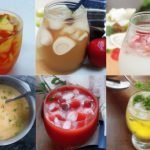Lager is a type of beer that is fermented and conditioned at low temperatures, resulting in a clean, crisp taste that is perfect for any occasion. However, not all lagers are created equal. In this guide, we will explore the different types of lager and their unique flavors and brewing methods. From the classic Pilsner Lager to the bold Bock Lager, there’s a lager out there for everyone. So sit back, grab a cold one, and let’s dive into the world of lager beer.
What is Lager?
Lager is a type of beer that is made using bottom-fermenting yeast strains and is brewed at cooler temperatures than other types of beer. This results in a beer that is light, crisp, and refreshing, with a low level of bitterness. Lager is usually clear and golden in color, with a thick, frothy head that lingers in the glass.
The Lager Brewing Process
The lager brewing process involves several steps, including:
Mashing: The grains are mixed with hot water to create a sweet liquid called wort.
Boiling: The wort is boiled with hops to add flavor and aroma to the beer.
Fermentation: The wort is cooled and yeast is added, which converts the sugar into alcohol and carbon dioxide.
Aging: The beer is then conditioned at cooler temperatures for several weeks or months to allow the flavors to develop and to create a crisp, clean taste.
Lagering: The beer is then stored at near-freezing temperatures for several weeks to further enhance the flavor and clarity.
Lager Yeast Strains
Lager yeast strains are different from ale yeast strains in that they ferment at cooler temperatures and settle at the bottom of the fermentation vessel. This results in a beer that is clean and crisp, with a lower level of fruity esters and higher level of sulfur compounds. There are several types of lager yeast strains, including:
Saccharomyces pastorianus: The most common lager yeast strain, used in the production of Pilsner and other light lagers.
Saccharomyces carlsbergensis: Used in the production of dark lagers such as Dunkel and Bock.
Saccharomyces eubayanus: A wild yeast strain that was recently discovered in Patagonia and is used in the production of some lagers.
Types of Lager
Pilsner Lager
Pilsner Lager is a light, crisp beer that originated in the Czech Republic. It is one of the most popular types of beer in the world and is characterized by its light color, mild flavor, and low bitterness. Pilsner Lager is brewed using pale malt and Saaz hops, which give it a floral, spicy flavor and aroma.
Bock Lager
Bock Lager is a strong, malty beer that originated in Germany. It is usually dark in color and has a rich, complex flavor that is slightly sweet and nutty. Bock Lager is brewed using a high percentage of Munich malt and is aged for several months to allow the flavors to develop.
Dunkel Lager
Dunkel Lager is a dark, malty beer that originated in Bavaria, Germany. It is characterized by its rich, caramel flavor and aroma, with a hint of chocolate and roasted malt. Dunkel Lager is brewed using a combination of dark and roasted malts, which give it its distinctive color and flavor.
Vienna Lager
Vienna Lager is a medium-bodied beer that originated in Austria. It is characterized by its amber color, with a slightly sweet, malty flavor and a mild hop bitterness. Vienna Lager is brewed using a combination of pale and Vienna malts, which give it its
Lager Brands
When it comes to lager brands, there are countless options to choose from. Some of the most popular and widely recognized lager brands include Stella Artois, Heineken, Budweiser, Carlsberg, and Corona.
Stella Artois is a Belgian lager with a smooth and refreshing taste that is perfect for any occasion. It has a light body and crisp finish, making it a great choice for pairing with a wide range of foods.
Heineken is a Dutch lager that is known for its iconic green bottle and distinct flavor profile. It has a slightly bitter taste with a hoppy aroma, and is best served cold.
Budweiser is an American lager that has been a household name for generations. It has a mild, slightly sweet flavor with a light body and crisp finish, making it a popular choice for casual drinking.
Carlsberg is a Danish lager that is characterized by its light, refreshing taste and crisp finish. It has a slightly bitter flavor with a hint of sweetness, and pairs well with a variety of foods.
Corona is a Mexican lager that is often served with a wedge of lime. It has a light, crisp taste with a slightly sweet finish, and is perfect for sipping on a hot day.
Lager Food Pairings
Lager’s crisp and refreshing flavor profile makes it an excellent choice for pairing with a wide range of foods. Some of the best lager food pairings include:
Pizza: The light, crisp flavor of lager pairs perfectly with the bold flavors of pizza, making it a popular choice for casual dining.
Grilled meat: Lager’s refreshing taste is an excellent complement to the smoky flavors of grilled meats like burgers, steaks, and sausages.
Fish: Lager’s light body and clean finish make it a great choice for pairing with seafood dishes like grilled fish, fish tacos, and ceviche.
Mexican food: The refreshing taste of lager is a perfect match for the bold flavors of Mexican cuisine, especially spicy dishes like tacos and enchiladas.
Sushi: Lager’s clean, crisp finish makes it a popular choice for pairing with sushi, sashimi, and other Japanese dishes.
Lager vs Ale
While both lager and ale are types of beer, there are some key differences between the two. The most significant differences lie in the brewing process, yeast, and fermentation temperature.
Lager is brewed using bottom-fermenting yeast and is fermented at cooler temperatures than ale. This results in a crisper, cleaner taste with less fruity or spicy notes. Lager is also aged for longer periods than ale, which gives it a smoother mouthfeel and a more refined taste.
Ale, on the other hand, is brewed using top-fermenting yeast and is fermented at warmer temperatures than lager. This results in a more complex flavor profile with notes of fruit, spice, and sometimes even a hint of sourness. Ale is typically not aged for as long as lager, which gives it a more robust, full-bodied flavor.
Homebrewing Supplies
If you’re interested in brewing your own lager at home, there are a few essential supplies that you’ll need to get started. These include:
Lager brewing kit: A starter kit that includes everything you need to brew your own lager, including a fermenter, airlock, thermometer, and more.
Kegging equipment: Once your lager is finished fermenting, you’ll need kegging equipment to transfer it into a keg for carbonation.
Wort chiller: A device that quickly cools your wort (the liquid that will become your beer)
Lager vs Ale: What’s the Difference?
If you are a beer enthusiast, you have probably heard of the age-old debate of Lager vs Ale. While both are popular beer styles, there are some key differences that set them apart. In this section, we will explore the main differences between Lager and Ale, from their brewing process to their taste and aroma.
Brewing Process
One of the most significant differences between Lager and Ale is their brewing process. Lager is brewed using a process called “bottom fermentation.” This means that the yeast used in the brewing process sinks to the bottom of the tank during fermentation. Lager is then aged at cool temperatures, which allows the flavors to develop slowly.
On the other hand, Ale is brewed using a process called “top fermentation.” This means that the yeast used in the brewing process stays on top of the tank during fermentation. Ale is then typically brewed at warmer temperatures, which allows for a faster fermentation process.
Yeast
The yeast used in the brewing process of Lager and Ale also differs. Lager uses “bottom-fermenting” yeast strains, which are capable of fermenting at cooler temperatures. These strains produce fewer fruity esters and more sulfurous compounds, giving Lager its distinct clean taste.
Ale, on the other hand, uses “top-fermenting” yeast strains that thrive at warmer temperatures. These strains produce more fruity esters, giving Ale its fruity and sometimes spicy flavors.
Fermentation Temperature
As mentioned earlier, Lager is fermented at cooler temperatures than Ale. Lager is typically fermented at temperatures between 34-50°F (1-10°C), while Ale is fermented at temperatures between 55-75°F (12-24°C).
Taste and Aroma
Lager has a clean, crisp taste with a subtle sweetness and a dry finish. It also has a mild aroma that is not overpowering. Ale, on the other hand, has a stronger taste and aroma, with a fruity and sometimes spicy flavor. It can have a sweet or bitter taste, depending on the variety.
In conclusion, while Lager and Ale are both popular beer styles, they have distinct differences in their brewing process, yeast, fermentation temperature, taste, and aroma. Lager is known for its clean, crisp taste and subtle sweetness, while Ale has a stronger taste and aroma with fruity and sometimes spicy flavors.
Munich Helles Lager
Munich Helles Lager is a pale, golden Lager that originated in Munich, Germany. It has a malty sweetness with a balanced hop bitterness and a crisp finish. Munich Helles Lager is brewed using a decoction mash, a process that involves boiling a portion of the mash to enhance the flavor and aroma of the beer. It is fermented at cooler temperatures than other Lagers, and the yeast strain used is a bottom-fermenting one.
Vienna Lager
Vienna Lager is an amber-colored Lager that originated in Vienna, Austria. It has a toasted malt flavor with a slightly sweet finish and a moderate hop bitterness. Vienna Lager is brewed using a blend of pale and caramel malts, which gives it its distinct amber color and toasty flavor. It is fermented with a bottom-fermenting yeast strain and lagered for several weeks at cool temperatures.
Choosing the Perfect Lager
With so many different types of Lagers to choose from, it can be challenging to know which one is the perfect one for you. Here are some tips to help you make your selection:
Consider the occasion: Different Lagers pair better with different occasions. For example, a light and refreshing Pilsner Lager is perfect for a hot summer day, while a rich and malty Bock Lager is ideal for a cold winter evening.
Consider the flavor profile: Each Lager has a unique flavor profile, so it’s essential to consider what flavors you enjoy. If you prefer a crisp and refreshing beer, a Pilsner Lager or Munich Helles Lager may be more to your liking. If you prefer a more robust and malty beer, a Bock Lager or Dunkel Lager may be a better fit.
Consider the alcohol content: Some Lagers have a higher alcohol content than others, so it’s essential to know your limits and choose a Lager that aligns with your preferences.
Conclusion
Lager beer is a popular beer style that has a wide variety of types to suit everyone’s tastes. From light and refreshing Pilsner Lagers to robust and malty Bock Lagers, there is a Lager for every occasion and every palate. Whether you’re enjoying a cold beer at a summer barbecue or a cozy winter evening, Lager is a classic beer style that never goes out of fashion.
FAQs
What is the difference between Lager and Ale?
Lager and Ale differ in their brewing process, yeast strains, and fermentation temperatures. Lagers are brewed using bottom-fermenting yeast and fermented at cooler temperatures, while Ales are brewed using top-fermenting yeast and fermented at warmer temperatures.
What is the best food to pair with Lager?
Lager pairs well with a variety of foods, including pizza, grilled meat, fish, Mexican food, and sushi.
What is the alcohol content of Lager?
The alcohol content of Lager varies depending on the type, but it typically ranges from 4-6%.
Can I brew Lager at home?
Yes, you can brew Lager at home using a Lager brewing kit and other necessary equipment such as kegging equipment, wort chiller, yeast starter kit, and hydrometer.
What is the history of Lager beer?
Lager beer originated in Bavaria, Germany, and has a long and fascinating history that includes Prohibition in the United States and the Reinheitsgebot, or German purity law, which governs the ingredients used in beer brewing.









